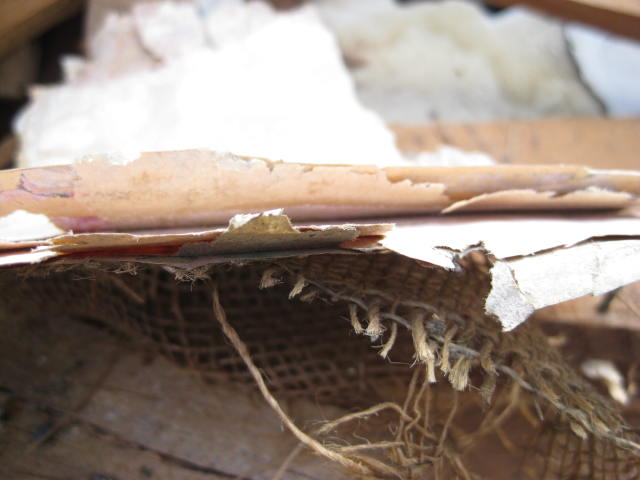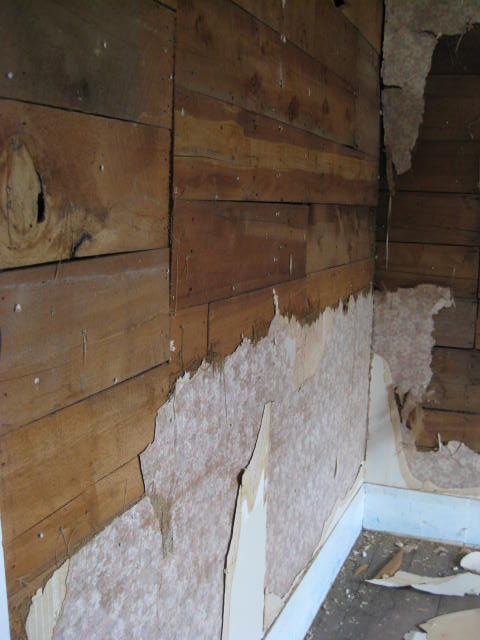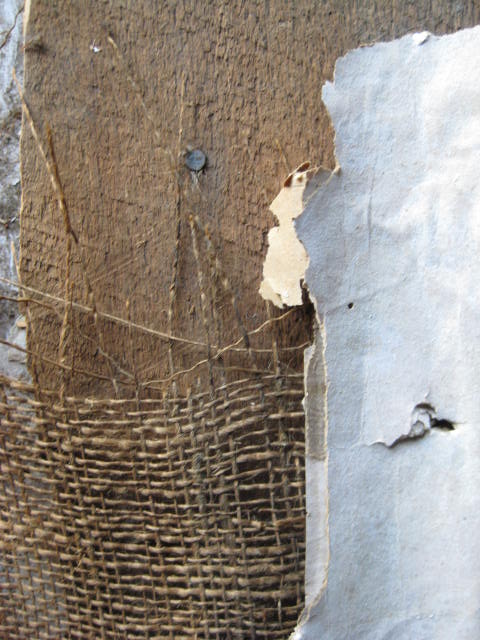Re-GIBing Scrim and Sarking is the Propertytoolbox topic for the next 4 blog articles. The articles will cover:
• What Scrim and Sarking is and how to identify it (that's all covered in this article)
• why you should consider replacing it
• what re-GIBing is
• What re-GIBing costs
What is Scrim and Sarking
There are generally three types of wall lining used in New Zealand houses:
• Scrim and Sarking
• Low Density Fibreboard
• Plasterboard – GIB
We are focusing on Scrim & Sarking because this is the most problematic type of wall lining in NZ homes.
What is Scrim and Sarking
Scrim & Sarking – often just called ‘Scrim’ is a hessian or jute sacking material (Scrim) that has been tacked or stapled on to rough sawn, horizontally placed, thin wooden planks (Sarking).

Layers Of Wallpaper On Scrim
Scrim and Sarking forms the 'wall board' - to which wallpaper is then fixed. Over the years a Scrim and Sarking wall may have been covered by many layers of wallpaper and in more recent times painted. Scrim and Sarking was used commonly in houses built in the late 1800’s and the early 1900’s.

Sarking Boards Exposed - Wallpaper Layers & Scrim Partiall Stripped Away
How Do I Know if it is Scrim and Sarking?
If you suspect a house has some Scrim & Sarking wall linings i.e. It falls into the ‘late 1800’s to early 1900’s' age bracket. Here are three tests you can use to work it out:
- The knock test - Scrim (unsurprisingly) feels like knocking on wood. Scrim is a very hard surface; the knock is hollow sounding, with the sound carrying well. It is impossible to distinguish any studs when knocking along the wall.
- The floating wallpaper test – Scrim & Sarking is ‘finished’ by covering the Scrim with wallpaper (sometimes the wallpaper has since been painted). With age the hessian Scrim starts coming away from the Sarking and gives the impression of floating, bulging or twisting wallpaper. This is especially obvious in room corners.
- Close inspection – With close inspection you can sometimes see rough sawn board (Sarking) or hessian (Scrim) where wallpaper is loose or has come away, or the wallpaper will look ‘textured’ as the woven hessian fabric has imprinted the wallpaper from underneath.

Close Examination - Sarking Boards, Scrim & Wallpaper
Using all or a combination of these techniques you should be able to identify Scrim & Sarking.
Next Post - Replacing Scrim with GIB – Re GIBing – Why Should I Do It?
The Propertytoolbox Home Buyers Guide
Do you think the house you are looking to buy has Scrim and Sarking wall linings? Not sure and want to find out more? Maybe a building inspector can help - and make sure to check out our ten key rules before you put in that offer. For more help, tips and tricks when you are on the house hunt, check out our house buying guide.
Rose Chapman
| #
This article does not really explain what sarking actually is (to someone like me, who knows nothing about building). Is sarking the rough-sawn lining boards themselves, or is it some sort of felt-like material that is attached to the boards before the scrim is over-laid? The 3rd picture (Close Examination) seems to show some other material between the boards and the hessian scrim. Thanks for your help 🙂
Reply
Claire
| #
Hi Rose. Sarking is the rough-sawn boards themselves. The way it is usually put together is Sarking boards, then hessian Scrim, then paper lining/wallpaper. I hope this helps 🙂
Reply